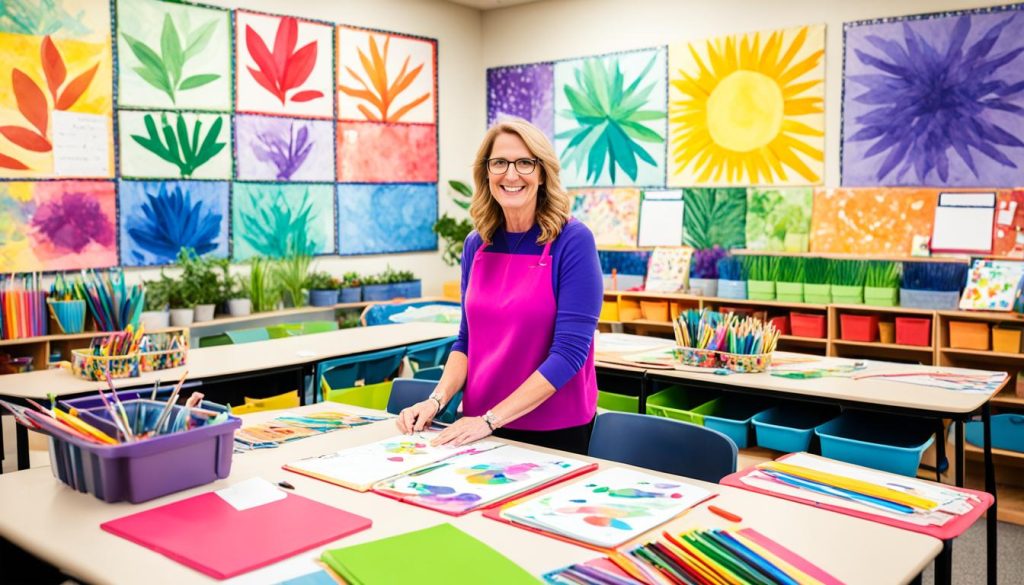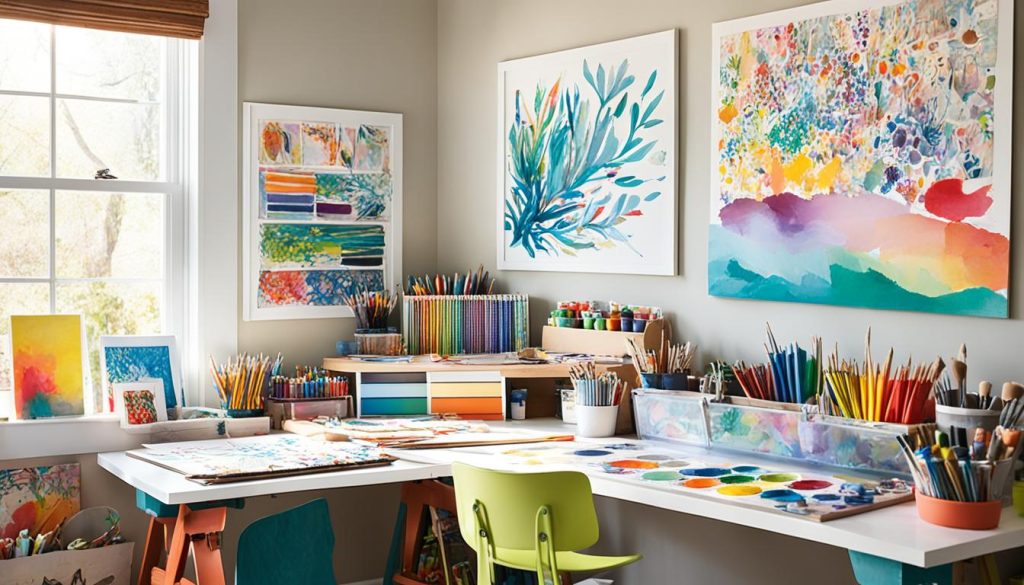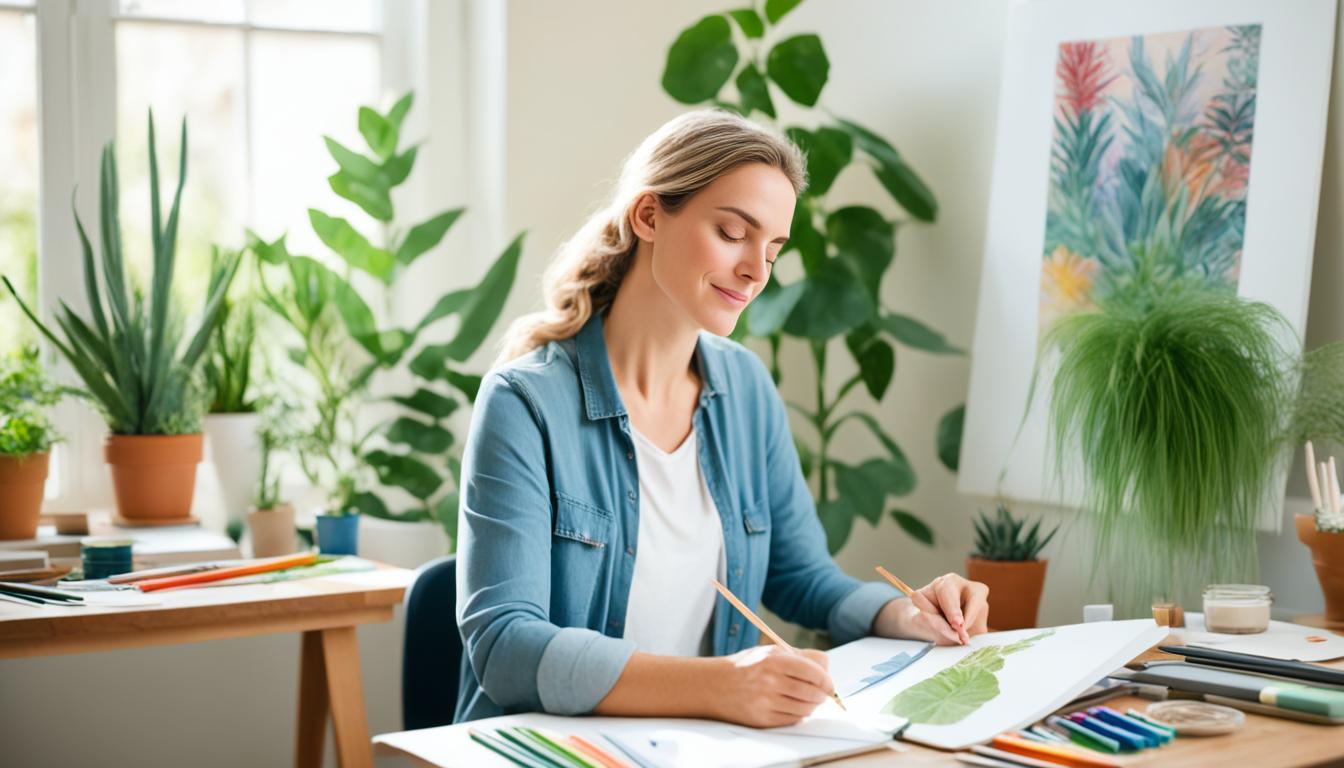In today’s rapidly evolving world, the ability to think creatively has become an invaluable asset. As educators, we hold the power to nurture and cultivate the creative talents of our students, unlocking their innovative potential and inspiring them to become the problem-solvers and visionaries of the future. By creating an environment that encourages creative thinking, we can foster the development of artistic skills, self-expression, and imaginative mindsets that will serve our students well in their personal and professional lives.
This article delves into the strategies and best practices for establishing a learning environment that stimulates creative thinking. We’ll explore the importance of a creative learning environment, the teacher’s role in enhancing creativity, and practical techniques to promote creativity among our students. Through insights from educational experts and research, we will provide a comprehensive guide to help you unlock the creative potential of your classroom and inspire the next generation of innovative thinkers.
Key Takeaways
- Understanding the characteristics of a creative learning environment and why it’s essential for student growth
- Recognizing the teacher’s pivotal role in fostering creativity and innovative thinking
- Exploring practical strategies to nurture creative talents, spark imagination, and unlock innovative potential
- Implementing physical and mental comfort factors to put students in the right mindset for creative expression
- Cultivating a classroom culture that encourages collaboration, experimentation, and continuous learning
Understanding the Importance of Creative Learning Environments
Nurturing creativity is essential for unlocking the innovative potential of our students. At the heart of this process lies the creation of a creative learning environment – a space that encourages nurturing creative talent, fostering imagination, and developing artistic skills. By understanding the nature and significance of such an environment, we can begin to encourage self-expression, unlock creativity, and inspire innovative thinking in our classrooms.
What is a Creative Learning Environment?
A creative learning environment is one that cultivates artistic potential and nurtures youthful talents. It is a space where students are empowered to unleash creative minds, experiment through trial and error, and develop their own unique theories and ideas. By fostering an atmosphere of fostering innovation and developing creative mindsets, we can unleash creative potential and inspire artistic expression.
Why is it Important to Foster a Creative Learning Environment?
Cultivating a creative learning environment is crucial because it allows students to feel comfortable taking chances, learn persistence, and become better at working as a team, solving complex problems, and finding new ways to learn. By cultivating imaginative thinking and encouraging creative confidence, we can empower students to tackle challenges with an innovative mindset.
Why Do Students Need to be Creative?
In the modern world, creativity is a critical component for the type of divergent thinking necessary for innovation, forming original ideas, and exercising critical thinking skills. Moreover, creativity is a valuable life skill that can help students nurture artistic talent and unlock creative abilities, opening new avenues for personal self-expression and fulfillment.
The Teacher’s Role in Enhancing Creativity
As the gatekeepers of the classroom environment, teachers play an indispensable role in nurturing and cultivating creativity among their students. By serving as role models and finding innovative ways to stimulate creative thinking processes, educators can unlock the creative potential of young minds. Although creativity can develop outside of the classroom, teachers are crucial in providing the right environment and encouragement for students to exercise and expand their creative capacities.
Through their control over the physical and emotional landscape of the classroom, teachers have ample opportunities to foster imagination, develop artistic skills, and inspire innovative thinking. By encouraging self-expression, unlocking creativity, and cultivating artistic potential, educators can empower students to unleash their creative minds and unlock their true creative abilities.
Beyond simply disseminating knowledge, the teacher’s role in enhancing creativity involves nurturing youthful talents, instilling a sense of creative confidence, and cultivating imaginative thinking. By inspiring artistic expression and fostering innovation, teachers can help students develop creative mindsets that will serve them well both in the classroom and throughout their lives.

Ultimately, the teacher’s impact on creativity is undeniable. By unleashing the creative potential of their students and nurturing artistic talent, educators can play a transformative role in shaping the next generation of innovators, problem-solvers, and creative leaders.
Nurturing Creative Talent
Cultivating a stimulating environment that nurtures creative talent and unleashes the creative potential of students is crucial. By attending to the physical and mental comfort of the learning space, we can help put students in the right mindset to unleash their creative minds and foster imagination.
Dress Comfortably for Creative Thinking
Formal or stiff clothing can be distracting and prevent students from going beyond their comfort zone during the ideation process. Encouraging students to dress comfortably can help them develop artistic skills and engage in self-expression more freely.
Provide Comfortable Seating for Ideation
Aching backs or physical discomfort can hinder creative thinking and innovative problem-solving. Providing ergonomic, adjustable seating allows students to cultivate their artistic potential and nurture their youthful talents in a comfortable environment.
Maintain the Perfect Temperature
Extreme temperatures can make it difficult to focus and unlock creativity. Ensuring the learning space is maintained at a comfortable temperature helps students inspire innovative thinking and encourage creative confidence.
foster imagination
,
develop creative mindsets
, and
nurture artistic talent
in our students, empowering them to
unleash their creative potential
and
cultivate imaginative thinking
.
Fostering an Environment Conducive to Creativity
To nurture creative talent and foster imagination, it’s crucial to create an environment that stimulates the brain and encourages exploration. One key aspect is ensuring a constant feeding to fuel the brain. By providing energizing meals and snacks, we can help students avoid the post-lunch slump and maintain their focus during crucial ideation sessions.
Equally important is the need to encourage breaks and exploration. Stepping away from the task at hand and allowing ideas to incubate can often lead to moments of problem-solving insight. Taking students on excursions to broaden thinking or using thought experiments can force them to make new connections that wouldn’t have been possible otherwise. By addressing both physical and mental needs, we can create a stimulating environment that sparks creativity and inspires innovative thinking.
| Strategies to Foster Creativity | Benefits |
|---|---|
| Providing Energizing Meals and Snacks | Maintain focus and avoid post-lunch slump during ideation |
| Encouraging Breaks and Exploration | Incubate ideas and lead to problem-solving insights |
| Taking Excursions and Using Thought Experiments | Broaden thinking and facilitate new connections |
By cultivating an environment conducive to creativity, we can unlock the creative potential of our students, nurturing youthful talents and inspiring artistic expression. This holistic approach to developing creative mindsets and encouraging self-expression is essential for fostering innovation and unleashing creative minds.

Facilitating Collaborative Ideation
At the heart of nurturing creative talent lies the power of collaborative ideation. By fostering an environment that encourages interaction, involvement, and the cross-pollination of ideas, we can unlock the innovative potential of our students. This approach not only inspires creative expression but also helps both clients and consumers learn from each other, leading to new insights and groundbreaking solutions.
Use a Note-Taker to Allow Ideas to Flow Freely
One of the key strategies in facilitating collaborative ideation is the use of a dedicated note-taker. By capturing all the ideas that arise during the ideation process, the note-taker allows participants to focus on the free-flowing exchange of thoughts, unburdened by the need to document every concept. This frees the mind to explore more freely, unlocking creativity and inspiring innovative thinking.
Break Out into Smaller Groups for One-on-One Ideation
Another effective technique for stimulating collaborative creativity is to break out into smaller groups for one-on-one ideation sessions. This intimate setting provides an opportunity for students to bounce ideas off each other, fostering a dynamic exchange and the cross-pollination of perspectives. By cultivating these smaller, more focused discussions, we can nurture the development of artistic skills, encourage self-expression, and inspire the unleashing of creative potential.
Stimulating the Creative Mind
Unleashing the creative potential of students requires more than just a well-organized classroom. It involves engaging the senses and providing visual stimulation to inspire innovative thinking. By incorporating tactile elements and thought-provoking imagery, we can cultivate an environment that nurtures artistic expression, fosters imagination, and unlocks the creative abilities of young minds.
Include Visual Stimulation in the Room
Posting thought-provoking images around the classroom, even if they seem unrelated to the current project, can spark unexpected connections and inspire new ideas. When the energy in the room starts to lag, these visual cues can help reignite the creative spark, prompting students to make unexpected associations and think outside the box. By encouraging nurturing creative talent and cultivating imaginative thinking, we can unlock the creative potential of our students and inspire artistic expression.
Provide Tangible Objects to Engage the Senses
In addition to visual stimulation, providing tangible objects for students to hold, touch, and play with can also facilitate creative thinking. This concept of “embodied cognition” has been supported by research, demonstrating the benefits of engaging the senses in the ideation process. By keeping the hands busy, we allow the mind to make free-flowing connections, unleashing creative minds and fostering innovation. Incorporating these tactile elements can create a more stimulating environment that nurtures youthful talents and encourages self-expression.

Practical Strategies for Promoting Creativity
As educators, we play a crucial role in nurturing the creative talents and unlocking the innovative potential of our students. By implementing practical strategies within the classroom, we can foster an environment that inspires creative thinking, cultivates imaginative problem-solving, and encourages self-expression. Let’s explore some of these effective approaches:
Create a Flexible Classroom Layout
Designing a flexible classroom layout that provides options for learning can unlock students’ creativity and encourage them to explore new ways of engaging with the material. By incorporating movable furniture, designated areas for group work, and ample space for hands-on activities, we can cultivate an environment that stimulates curiosity and innovation.
Establish a Classroom Library
Stocking our classroom with a diverse selection of literature that complements creative learning activities can be a powerful tool for nurturing youthful talents and inspiring artistic expression. By providing students with access to a wide range of resources, we can foster imagination, develop artistic skills, and unlock their creative abilities.
Assign Open-Ended Tasks
Instead of tasks with a single correct answer, we can encourage creative problem-solving by assigning open-ended challenges that allow for multiple solutions. This approach inspires innovative thinking, develops creative mindsets, and unleashes the creative potential of our students, empowering them to think outside the box and make meaningful connections.
Exercise Patience and Allow Time for Discovery
Creativity often flourishes when we exercise patience and give our students the time they need to explore, experiment, and make new discoveries. By resisting the urge to rush towards solutions, we can cultivate an environment that nurtures creative talent and fosters imaginative thinking.
Encourage Group Collaboration
Fostering a collaborative environment where students can bounce ideas off one another, learn from each other, and cross-pollinate their creative energies can be a powerful way to inspire artistic expression, encourage self-expression, and unleash the creative minds of our students.
Provide Constructive Feedback
By offering constructive feedback that celebrates successes, identifies areas for growth, and encourages creative confidence, we can nurture artistic talent, foster imagination, and develop the artistic skills of our students.
Model Creative Behavior as an Educator
As educators, our own creative behavior and enthusiasm can serve as a powerful model for our students. By embracing a spirit of exploration, demonstrating a willingness to take risks, and incorporating creative activities into our teaching practices, we can inspire innovative thinking, cultivate artistic potential, and unleash the creative abilities of our learners.
Leverage Students’ Curiosity and Interests
Tapping into the natural curiosity and unique interests of our students can be a highly effective way to foster imagination, nurture youthful talents, and encourage self-expression. By designing learning experiences that align with their passions and inspire their inquisitiveness, we can cultivate an environment that unlocks creativity and inspires artistic expression.
Experiment with New Activities and Resources
Continuously exploring and incorporating new activities, tools, and resources into our teaching can help us foster innovation, develop creative mindsets, and unleash the creative potential of our students. By maintaining an openness to experimentation and a willingness to try new approaches, we can nurture artistic talent, inspire imaginative thinking, and cultivate a classroom culture that celebrates creativity.
Collaborate with Fellow Educators
Engaging in collaborative efforts with our fellow educators can be a powerful way to expand our own creative horizons, share best practices, and develop innovative teaching strategies. By learning from one another, co-creating learning experiences, and fostering a community of creative practitioners, we can nurture artistic talent, inspire innovative thinking, and cultivate a shared commitment to unleashing the creative potential of our students.

Conclusion
In conclusion, creating an environment that encourages creative thinking is essential for nurturing the creative talents of students. By understanding the importance of creative learning environments, recognizing the teacher’s role in enhancing creativity, and implementing practical strategies to promote creativity, educators can unlock the innovative potential of young minds.
From fostering physical and mental comfort to facilitating collaborative ideation and stimulating the senses, a multifaceted approach is key to cultivating a classroom culture that inspires creative expression, problem-solving, and self-discovery. By embracing creativity as a critical life skill, teachers can empower students to think outside the box, make meaningful connections, and unlock new avenues for personal and academic growth.
As we continue to navigate the evolving educational landscape, the ability to foster creativity and inspire innovative thinking will remain a crucial asset for both educators and students alike. By nurturing youthful talents, unleashing creative minds, and cultivating imaginative thinking, we can pave the way for a future where creativity and innovation are the driving forces behind personal and societal transformation.
FAQ
What is a Creative Learning Environment?
Why is it Important to Foster a Creative Learning Environment?
Why Do Students Need to be Creative?
What is the Teacher’s Role in Enhancing Creativity?
How Can Teachers Nurture Creative Talent?
What Strategies Can Teachers Use to Foster an Environment Conducive to Creativity?
How Can Teachers Facilitate Collaborative Ideation?
How Can Teachers Stimulate the Creative Mind?
What Practical Strategies Can Teachers Employ to Promote Creativity?
Source Links
- https://hatrabbits.com/en/creative-environment/
- https://www.ideastogo.com/innovation-blog/10-ways-to-make-your-environment-more-creative
- https://drexel.edu/soe/resources/teacher-resources/inspire-creativity-in-the-classroom/
